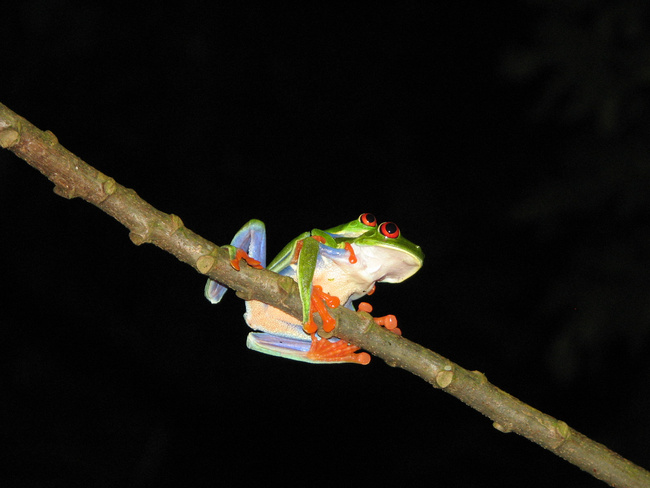Amphibian Profiles
Some of the most exciting colors found in the natural world are found on amphibians. More than 6,000 species of amphibians inhabit our planet. Encountering any of them is an enchanting moment, looking a tree frog in the eye or marveling at the bright intensity of a Brilliant Forest Frog. Some, like the Tink Frog and Milk Frog, have distinct songs that carry through the forest.

More about Amphibian Profiles
While they may be charmed by sight and sound, visitors should not plan to handle any of the amphibians. Most carry poisons, and some, like the Cane Toad and Blue-jeans Frog, are quite toxic. While not all frogs, salamanders, toads, and caecilians are dangerous to humans, many of their poisons are still not well understood. It is better to leave them in the leaves.
Much of amphibian life revolves around water. They don’t drink water, but they do absorb it—and lose it—through their skin. For this reason, most frogs and other amphibians in are found in the wetter lowlands where there is evergreen forest and rain during many or all months of the year.
Most amphibians are active at night, when it is cooler and wetter. During the day they tend to avoid direct sunlight so that they don’t dehydrate. In general, amphibians here are shy, and the ones without gorgeous colors often have incredible camouflage (consider the Glass Frog). In most parks and forests, a guided night hike is a good opportunity to see more of the vibrant amphibian life.
It's more than just having a good time or visiting beautiful places (although that's absolutely a part of it!), it's about being part of a unique experience that stays with you.



